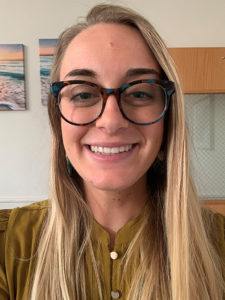Section 1412(a)(5) of the Individuals with Disabilities Act (IDEA) outlines regulations regarding the least restrictive environment (LRE). The statute states:
To the maximum extent appropriate, children with disabilities, including children in public or private institutions or other care facilities, are educated with children who are not disabled, and special classes, separate schooling, or other removal of children with disabilities from the regular educational environment occurs only when the nature or severity of the disability of a child is such that education in regular classes with the use of supplementary aids and services cannot be achieved satisfactorily (IDEA, 2019).
I challenge you to think about what the “regular educational environment” provides for our autistic students. The term restrictive is used to describe the level of support a student receives from a programmatic perspective. In my professional experience, restrictive, as defined by IDEA, is sometimes most appropriate for autistic students to master educational goals, make meaningful progress, and continue towards increased quality of life in a student’s post school-aged years.

Caitlin Sweetapple, EdD
It was noted over a decade ago that the language used by IDEA was vague and provided no direction to placement teams working with students with disabilities (Alquraini, 2013); however, changes have yet to be made to provide clear direction to professionals. In my professional opinion, perceptual research is critical to understand how the LRE has impacted autistic students. To truly create effective change in policy, lawmakers must hear the voices of those who attend school in a least restrictive environment to understand the efficacy of this policy.
Though Section 1412(a)(5) of the IDEA is well intentioned, I argue the objectives are no longer relevant for our autistic students and students with disabilities in general. The statute is worded as if education is binary in nature, when informed professionals in autism education know diversification and individualization within special education is critical for autistic students to be successful in school. Simply put, our general educational system in the United States is not well prepared to educate autistic minds, and often, the restrictive environment is.
So, what’s next? Firstly, autistic voices should inform any educational policy. IDEA reform is needed, and quickly, utilizing the experiences of autistic students in the least restrictive environment. It’s critical to understand the impact educational environments have on autistic students’ trajectory post school-aged years to inform policy. Secondly, once initial reform is complete, school leaders should be trained in implementation to ensure understanding and consistency at placement meetings. Lastly, ongoing review of special education policy is imperative to ensure pertinent programming is implemented. The next steps do not come without challenges and perseverance, yet they are critical in the fight for educational justice for autistic students.
Dr. Caitlin Sweetapple is the Director of Research at Shrub Oak International School (SOIS), a private, coeducational, therapeutic day and boarding school for students ages 8-30 on the autism spectrum who face complex challenges. The mission of the research department at SOIS is to conduct and publish cutting edge, novel research in the field of autism education. For more information, please contact Dr. Sweetapple at csweetapple@shruboak.org.
References
Alquraini, T. A. (2013). An analysis of legal issues relating to the least restrictive environment standards. Journal of Rv esearch in Special Educational Needs, 13(2), 152-158.
Section 1412 (a) (5). Individuals with Disabilities Education Act. (2019, November 7). https://sites.ed.gov/idea/statute-chapter-33/subchapter-ii/1412/a/5






YES! I agree 100%. All that LRE ended up doing is “mainstreaming” all students into classroom environments disrupted by students that need 1:1 focused attention and students “mainstreamed” into cultures of bullying and generalized educational instruction inappropriate for these different learners. The ideals sought to be attained by LRE were less about the science of learning, what’s best for the learners, and more about political posturing and bleeding heart ideals. Last, LRE has often been used to exclude much needed support and medical treatments, like ABA and BCBAs, from being delivered in or during school hours. LRE policies definitely needs to be reevaluated.
[…] been reprinted with permission. You may view the original article, published on July 5th, 2023, at https://autismspectrumnews.org/a-call-for-reform-of-the-least-restrictive-environment. For more information about Autism Spectrum News, please […]